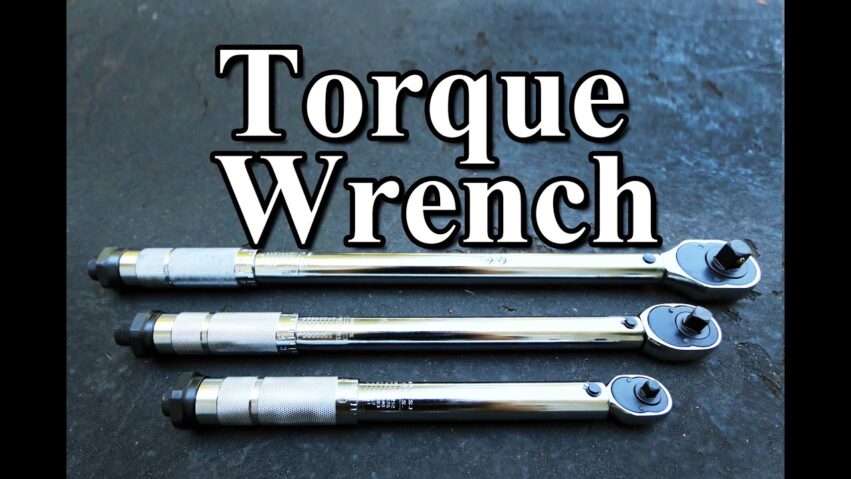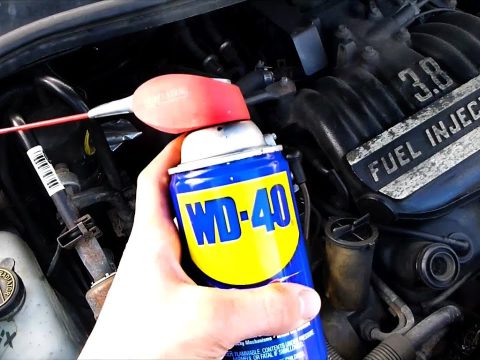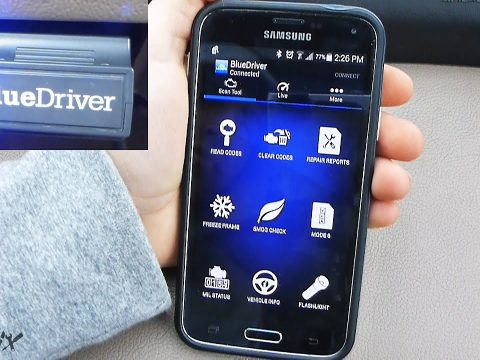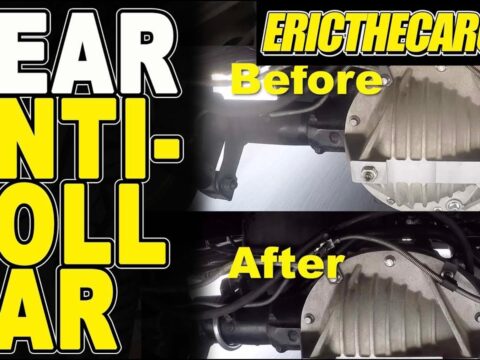Torque wrench torque specs. Learn to properly use and maintain a torque wrench. Using a torque wrench on nuts and bolts is important to make sure the bolt is tightened to the correct tightness or torque. In this video I show how to use a torque wrench, give a few torque wrench top tips, also go over many questions people have about torque wrenches.
Here is the torque wrench I use: http://amzn.to/1UYstzW
How to Check Torque Wrench Calibration: COMING SOON!!!
How to Use a Torque Wrench (My Old Video): https://www.youtube.com/watch?v=5XzKvEnk1FY
OBDII Scanner Review: https://www.youtube.com/watch?v=xPI36bKVCjk
**If the video was helpful, remember to give it a “thumbs up” and consider subscribing. New videos every Thursday**
-Website: http://www.ChrisFixed.com
-Facebook: https://www.facebook.com/chrisfix8
-Twitter: https://twitter.com/ChrisFixed
-Instagram: https://instagram.com/chrisfixit
-Subscribe Here: http://www.youtube.com/subscription_center?add_user=paintballoo7
-YouTube Channel: https://www.youtube.com/ChrisFix
Disclaimer:
Due to factors beyond the control of ChrisFix, I cannot guarantee against improper use or unauthorized modifications of this information. ChrisFix assumes no liability for property damage or injury incurred as a result of any of the information contained in this video. Use this information at your own risk. ChrisFix recommends safe practices when working on vehicles and or with tools seen or implied in this video. Due to factors beyond the control of ChrisFix, no information contained in this video shall create any expressed or implied warranty or guarantee of any particular result. Any injury, damage, or loss that may result from improper use of these tools, equipment, or from the information contained in this video is the sole responsibility of the user and not ChrisFix. Copyright 2015 ChrisFix All rights reserved.






















Best Mechanic online. Thanks again Chris!
Thanks🎉
Thx for this vid 💪🏽
thanks dad
Hey Chris or anyone. I know it’s a foolish question but when you’re making the lug nuts tight, is the switch supposed to be on the
left off
Right on ?
Thank you so much for sharing this video this really helped me
in case i cant find the torque specifications for my car in the intenet or any book, what can i do?
And another video that show how to NOT use a torque wrench. But every mechanic that I saw until today has used a torque wrench in a wrong way. First of all, you should click the torque wrench at max (best) torque for about 4-6 times on a very tight nut. Then you put your torque wrench in a position so that you use the force downwards and more important, the torque wrench should be level (horizontal) to the ground the best as possible when it clicks. And the most important: Don't push that wrench down like an idiot. You go slowly with a consistent movement. You can very well see in this clip, that the nut is turning even the click has already been heard. This way you're guaranteed to overtorque your nut. If you're lucky it's "only" about 10-20%, if you go very fast, it might as well be 50% or even double the torque you wanted, especially with low torques. Don't ever do this on aluminium parts or when working on an engine. You're guaranteed to break something. Also never ever click two or more times. Each time you click more, you first have to overcome the already existing torque making sure that the next value will be higher than the first one (which was the correct one).
Thank you. A clear, well made tutorial. Perfect 👍
Sokath his eyes uncovered!
This video is very old but very good thank you for the help
Very helpful! Thank you!
How can i lock(block) the torque wrenche so that no one can change the value?
Do not take the torque wrench to zero it will uncalibrated take it to its lowest setting on my torque wrench the lowest setting is 16 foot pounds the maximum is 80
Your setting the torche wrench at 100 lbs ft, but that same line that u set it on 120 and 140 also share the same straight line. Please explain I am new to this tool. I'm wanting to buy one. Thank u for your video.
Ty Chris you made it simple to understand. "Whispers" I'm 42 and never learned how to use these wrenches. 😄
I fuckin love u ChrisFix been watching since highschool and youre a god
Excellent video!
I just recently became a car guy (didn't needed one for years) and I find your vids great. Informative with visual explanations too.
Excellent video. I've always wanted to know how to do this.
Absolutely it was !
these videos are way too good
i wish all videos were made this well. fantastic video. told me everything i wanted to know and then some.
Hey how many NM of torque for a ram 2500 ?
Hey, Chris!
I see you use Haynes repair manuals often, but have you ever tried those hosted in emanualonline?
I’m looking to do the best purchase for a couple of makes
Nice and simple, excellent.
I have to correct you somewhat on the terminology for expressing torque. First, I am a retired physicist with B.S. and M.S. degrees in physics who has taught calculus-based physics courses in college to prospective engineers and students in the physical sciences. My particular field of interest is mathematical physics, with hobby interests in electrical and mechanical engineering and a lifelong interest in cars. I am greatly interested in your good efforts to educate and help people in working on cars. It is in that spirit that I offer this advice.
Torque is commonly thought of in engineering circles as a vector quantity, since it has a magnitude and a direction. A scalar quantity like work or energy has only magnitude. In strict mathematical terms, entities such as vectors and scalars are classified as such if they obey certain transformation properties, under such operations as rotations or translations. By its strictest definition torque is not even a vector, but is a more general entity called a tensor. Because it exists as a three-dimensional entity, the tensor product that defines torque has the properties of a vector and is accepted as such in a loose sense by engineers and technicians.
The simplest war to look at torque is to view it as a something called a vector, or more properly a pseudo vector, or cross product, denoted r ⨉ F. This is a product of two vectors, r – a position vector, and F – the line of action of a force. The product generated is another vector whose magnitude is the simple scalar(numerical) product of the factors and whose direction is perpendicular to the plane formed by the two vectors. Because this is actually a tensor product, the multiplication does not commute, i.e. r ⨉ F does not equal F ⨉ r. the magnitudes are the same but the directions are reversed. For a scalar product, like for work or energy, the product does commute.
In adhering to the strict sense that torque is a pseudovector whose order of multiplication is important it is better to write the units that comprise the product, meters and Newtons for S.I. units or feet and pound force for imperial units. So retain the same order in expressing the order of the product, distance times force, in the units for torque. m*N or ft*lb. For expressing the units for work, W = F times distance, the order doesn't matter since it is a scalar quantity. I think it is helpful for us to keep this distinction in mind so that we retain a clear understanding between the difference between a vector and a scalar.
You can consult any college-level introductory physics text, algebra or calculus-based, to confirm what I've said. Some of the arcane stuff on tensor properties or advanced transformation principles would be found in more advanced works in applied mathematics.
Hi, thank you chris fix,❤❤❤
Being off by a few lbs from a 3/16” bolt all the way up to 1-1/2 bolt is never going to matter. I’ve been doing mechanic work for 40 years and no mechanic uses one ever. The only time is maybe building the internal parts of an engine where 1000th of an inch matters. The rest of the bolts on a car really don’t matter. The only safety issues on a car anyway are the front end and brakes so just crank them down tight. Common sense. I’ve had my torque wrench 25 years and just checked to see if it’s close and it is. I don’t throw it around and that’s a good ora rice for sure but they hold up pretty well. Now new torque wrenches I don’t know about. They could be junk
What’s the use of the thing at the back of the wrench’s head?
The 0 setting doesnt exactly line up with the 80 torque lbs mark, its about 1mm below it. Then the next 0 is just above it..
I need to torque a bolt to 7.2 pounds, I can't fine a wrench for that? I have the inch/pounds but my spec says 7.2 lbs, please help?
Perfect answers to my questions…. thanks Chris
And no one in these videos ever tells you about sockets and what size to get, and it's not in the manual. Unless you already have DIY/car mechanics experience in which case why watch these videos…
Thanks 👍
I literally just bought my first torque wrench then this is the first video in my recommendations when opening youtube
can i use a 1/2 on a small bolts lets say i need 40 foot pounds or would it be better to use a 1/4 or 3/8 for better accuracy wouldn't the 1/2 be less accurate possibly braking the bolt over tightening the bolt thing your almost at 40 foot pounds
why did you say it ranges from 20ft lbs to 150 when you have the option to bring it down to 0, is it not accurate to go that low? im trying to torque my transmission bolts to 8lbs
HOW MUCH NEED SET UP FOR ENGINE OIL TURN BOLT ?
Your parents did well
Amazing explanation! Thank you!